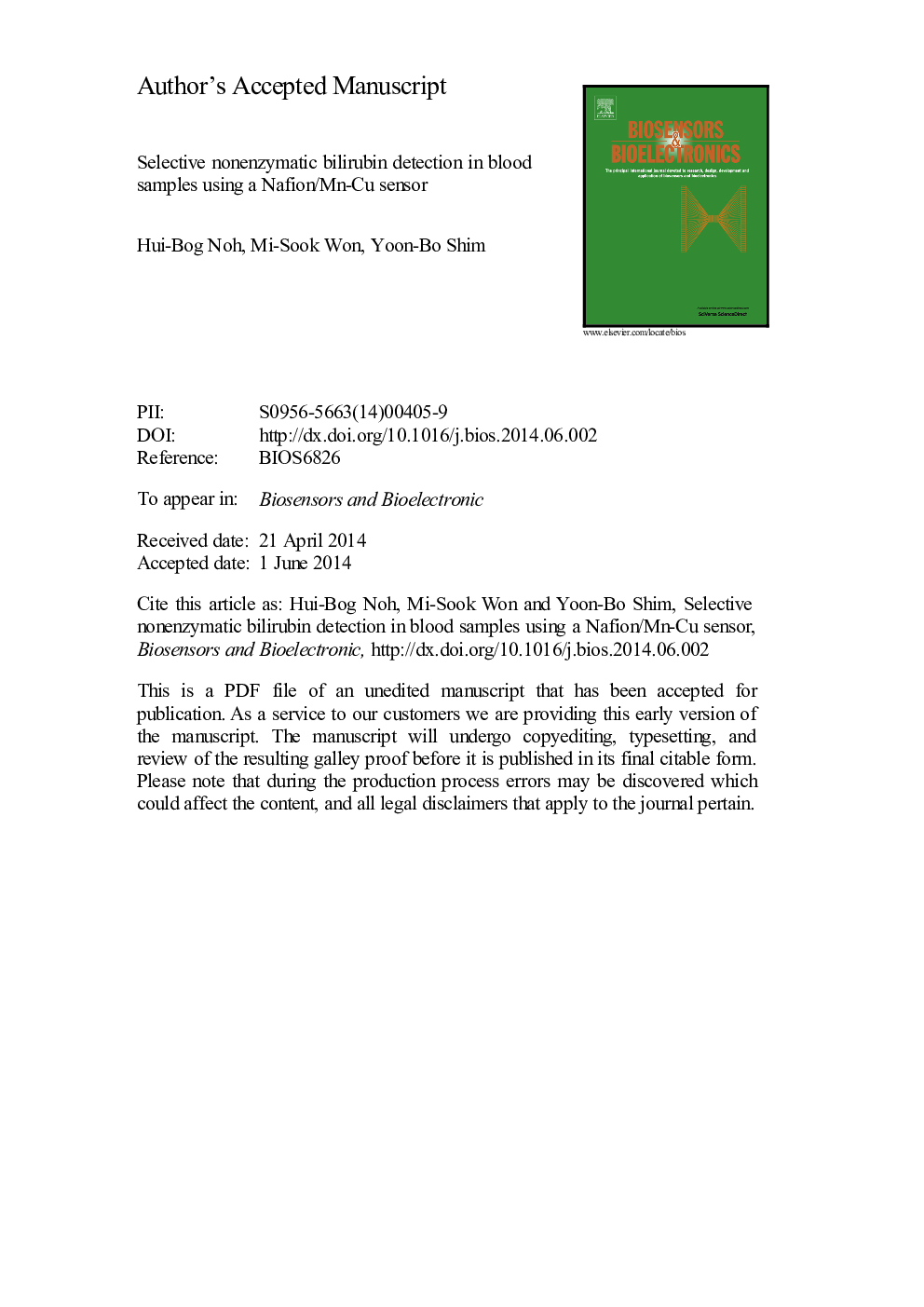| Article ID | Journal | Published Year | Pages | File Type |
|---|---|---|---|---|
| 7233340 | Biosensors and Bioelectronics | 2014 | 27 Pages |
Abstract
The specific detection of biological organics without the use of an enzyme is challenging, and it is crucial for analytical and clinical chemistry. We report specific nonenzymatic bilirubin detection through the catalytic oxidation of bilirubin molecule on the Nafion/Mn-Cu surface. The catalytic ability, true surface area, morphology, crystallinity, composition, and oxidation state of the sensor surface were assessed using voltammetry, coulometry, XPS, XRD, Brunauer-Emmett-Teller (BET), SEM, EDXS, and TOF-SIMS experiments. The results showed that the surface was composed of microporous Mn-Cu bimetallic crystal in flake shape with a large BET surface area (3.635 m2 gâ1), where the surface area and crystallinity mainly affected the sensor performance. Product analysis of the catalytic reaction on the sensor probe revealed a specific two-electron oxidation of dipyrromethane moiety to dipyrromethene in the bilirubin molecule. Experimental variables affecting the analysis of bilirubin were optimized in terms of probe composition, temperature, pH, and potential. At the optimized condition, the dynamic range was between 1.2 μM and 0.42 mM, which yielded the equation of ÎI (μA)=(1.03±0.72)+(457.0±4.03) [C] (mM) with 0.999 of correlation coefficient, and the detection limit was 25.0±1.8 nM (n=5, k=3). The stability test, interference effects, and analysis of real clinical samples, human whole blood and certified serum samples were demonstrated to confirm the reliability of the proposed bilirubin sensor.
Related Topics
Physical Sciences and Engineering
Chemistry
Analytical Chemistry
Authors
Hui-Bog Noh, Mi-Sook Won, Yoon-Bo Shim,
